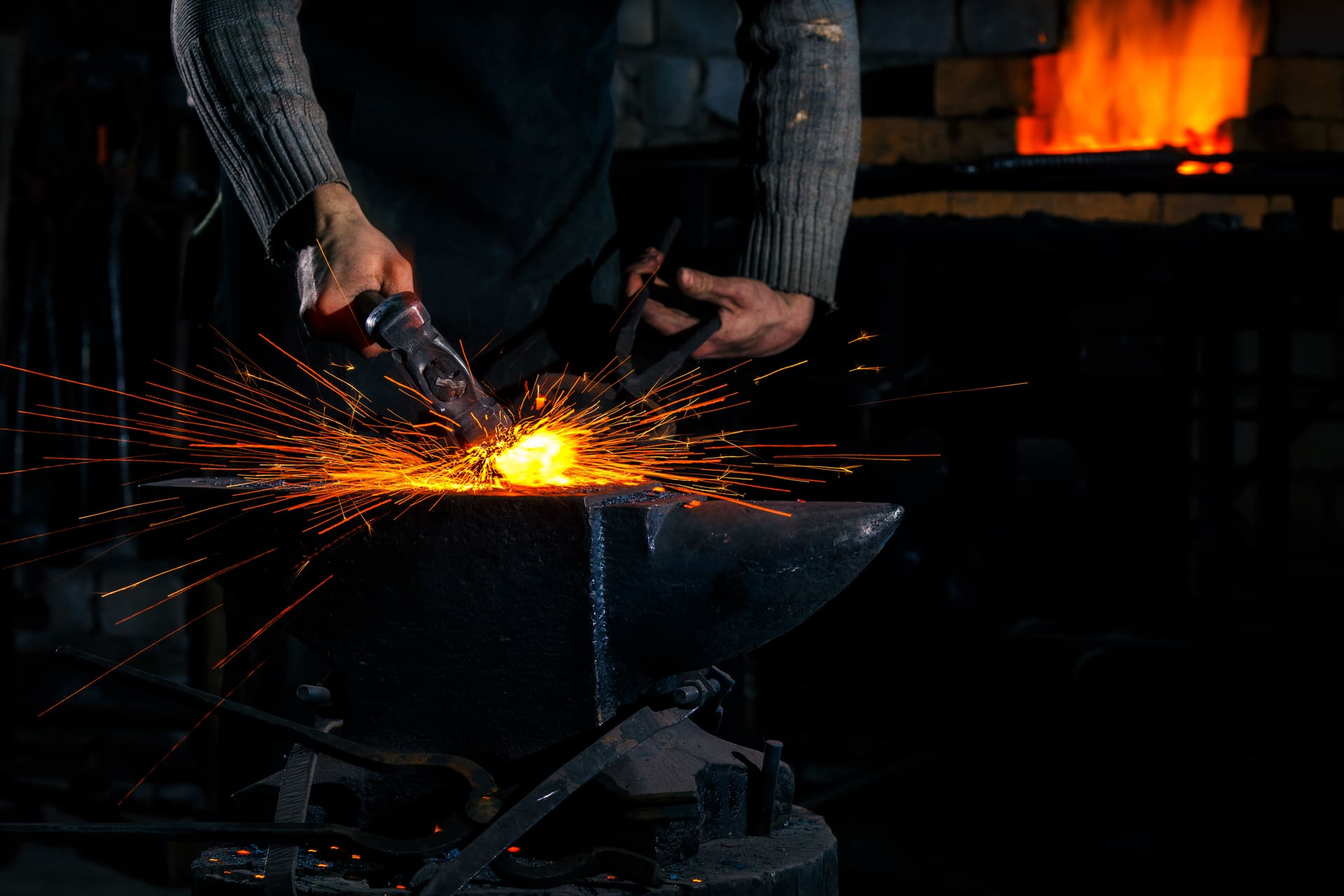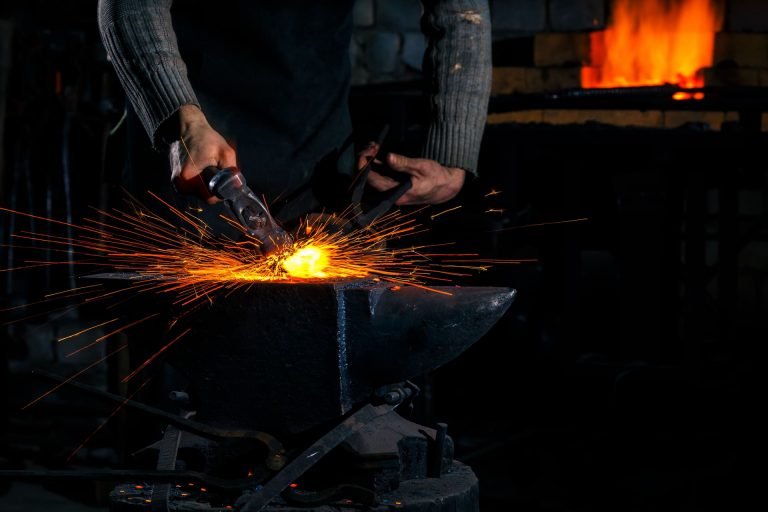3 Ironmasters Who Transformed the Iron Forging Craft
Central to society and our industrial development, the role of the ironsmith in our civilization’s history was as important as the discoveries of the printing press, electricity, and computers.
The ironsmith was a figure with many faces. He was cherished for his work and sometimes feared for his ability to bend metal and fire to his will.
In the early ages of trades and crafts, an ironmaster’s creations were essential in the manufacturing of almost everything. There was practically no tool that didn’t require the forging expertise of a blacksmith. Our industrial development was significantly influenced by the skillful hands of these artisans.
Some ironmasters left a lasting legacy and were pivotal in the discovery and establishment of improved iron forging practices, so let’s look at a few metal forgers without whom this craft wouldn’t be the same today.
But first, let’s take a brief look at the history of iron forging.
Iron & Ironsmithing History
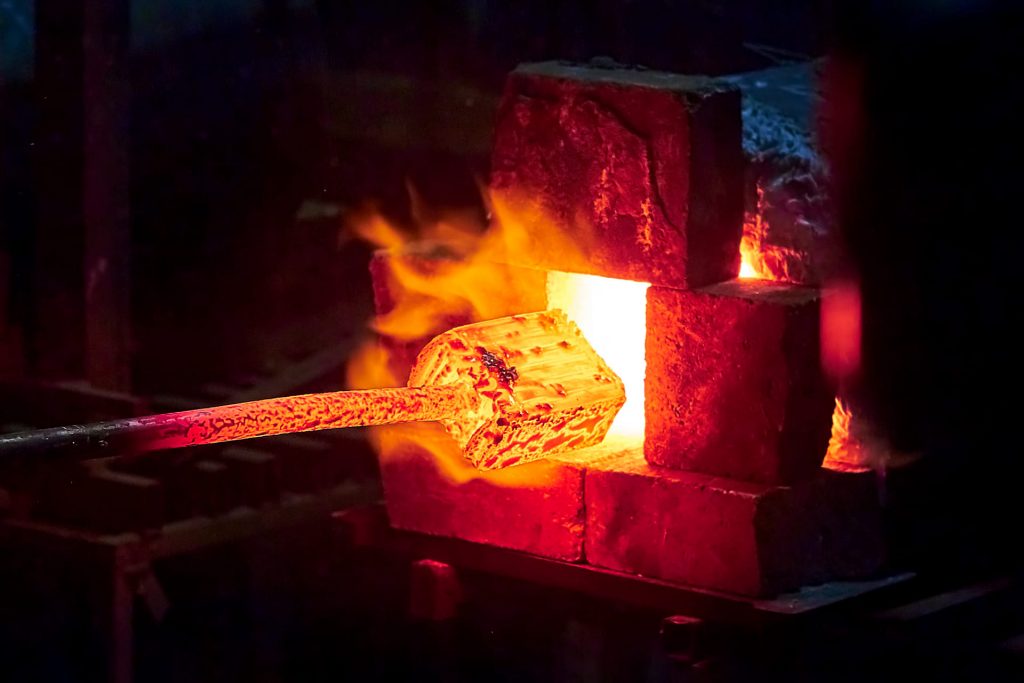
Historical evidence suggests that humans first stumbled upon iron way back in 3500 BC, in Egypt, when beads of meteoric iron were discovered. People started to hammer them into spearheads, trinkets, and other tools.
Somewhere between 2000 BC and 1200 BC, the Hittites – an ancient empire that ruled the lands of modern-day Turkey, discovered the process of iron smelting and began extracting iron from its ore.
The process allowed people to expand the usability of iron in weaponry but the Hittites kept it a secret until 1000 BC. when Chinese ironmasters also discovered how to extract and process the metal.
Iron remained the primary material for weapons until the Middle ages when decorative iron pieces began adorning Christian temples. That encouraged French and Spanish ironsmiths to experiment with the material and create some of the most intricate iron decorations, still adorning places of cultural and religious significance. Notre Dame, the Royal Chapel of Granada, and the Chantilly Castle gates are just a few examples.
Iron extracting, however, remained a cumbersome and expensive process until the 1700s, when the Industrial Revolution helped Abraham Darby modernize the craft.
Abraham Darby I
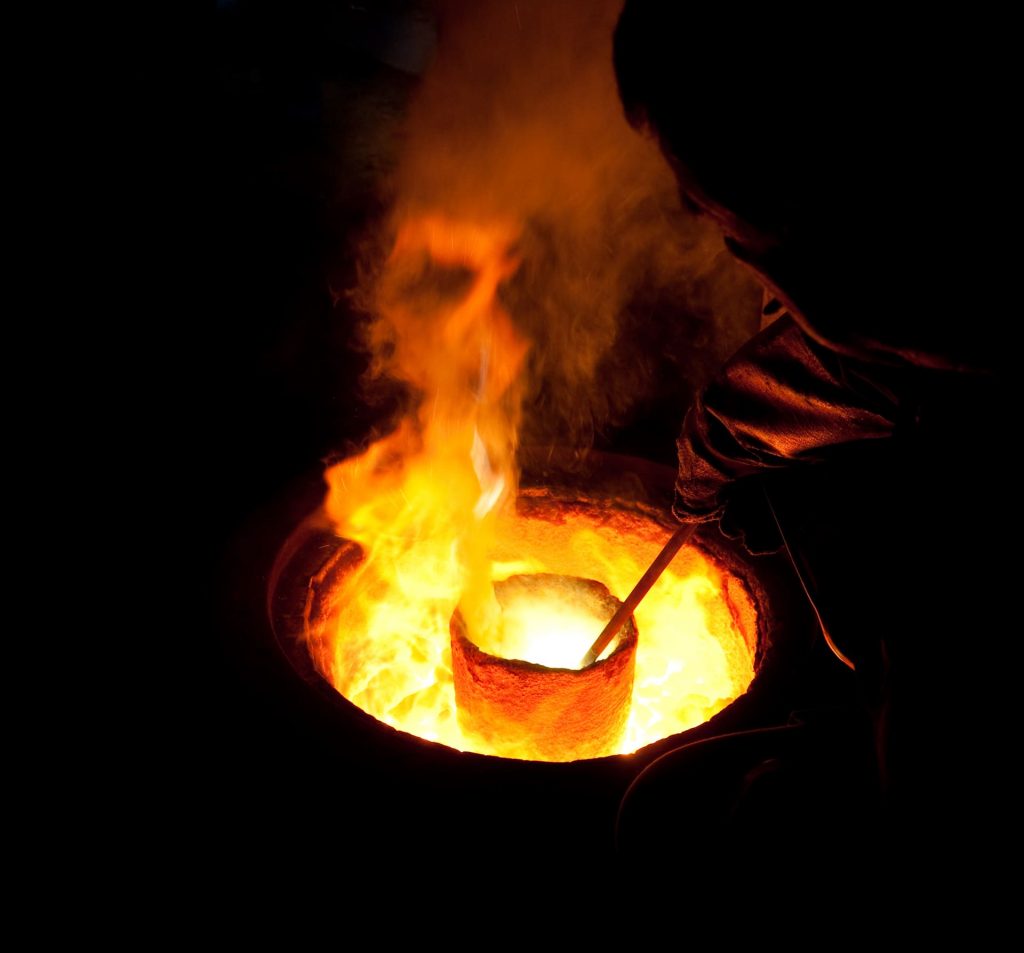
Abraham Darby the Elder, was the English iron forging master who developed the process of producing pig iron (crude iron) in a blast furnace that ran on coke (heated coal or oil, in a vacuum) instead of charcoal.
Before Darby’s process was created, people extracted iron in bloomeries that used iron ore and charcoal to create a mixture of iron and slag, called sponge iron. The process was then followed by further forging and refinement, which took a long time and effort. Furthermore, the prices of wood from which charcoal was created began to increase rapidly and made iron forgers heavily dependent on imports from countries such as Sweden and Russia.
That was until Darby patented his method of making cast iron pots in 1707. He created a commercially successful way to produce thinner, and more economically viable iron pots, using coal and coal derivatives (coke), instead of the expensive charcoal.
Admittedly, Darby wasn’t the inventor of the process, but he was the first to push the use of blast furnaces and coal out of its theoretical use and into the real world.
Henry Cort
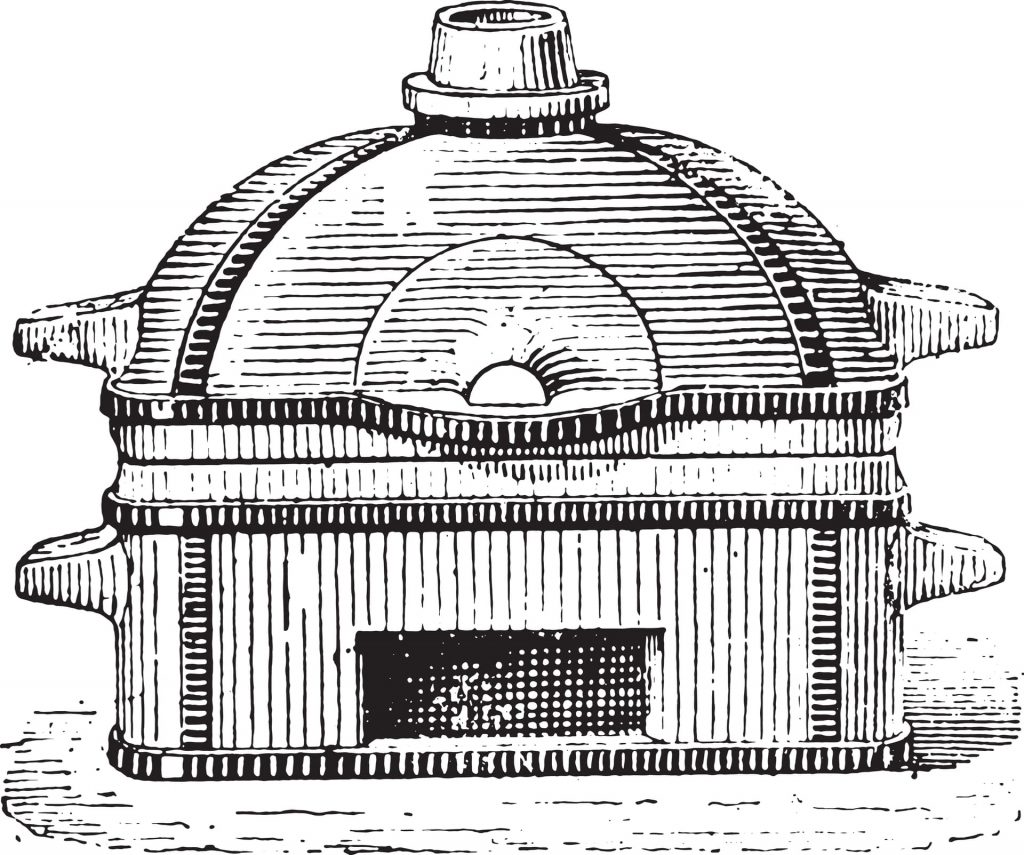
Henry Cort was the British industrialist, who invented the puddling process – the method of converting the pig iron into wrought iron.
After serving 10 years in the Royal Navy, Cort accumulated capital that was sufficient for him to buy ironworks near Portsmouth in 1775. There he began experimenting with different methods of producing wrought iron.
In 1783, Cort patented his grooved rollers which helped him produce the wrought iron much faster than the traditional hammering process.
A year later, in 1784 he patented the puddling process. Puddling is a method in which pig iron is subjected to heat and frequent stirring in a reverberatory furnace together with oxidizing agents.
These two inventions of the ironmaster had a huge impact on the British iron industry, quadrupling the production of wrought iron in the next 20 years.
James Beaumont Neilson
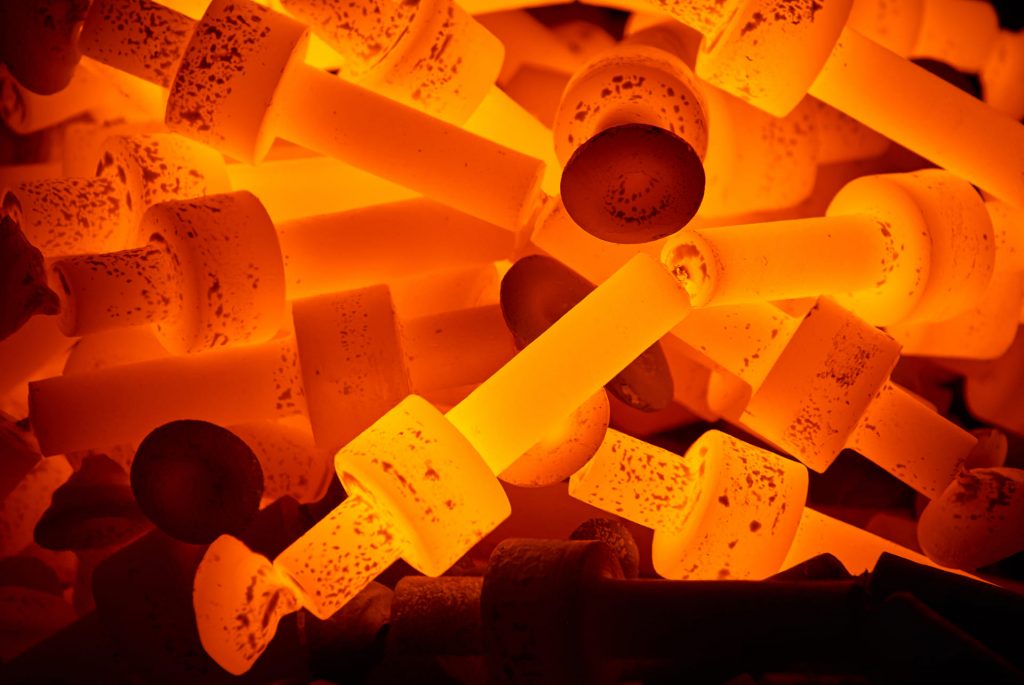
James Beaumont Neilson was a nineteenth-century Scottish inventor who introduced the use of hot air in blast furnaces. Before the establishment of Neilson’s method, ironmasters used cold air in iron smelting processes.
Hot blast describes the process of preheating air blown into a blast furnace. The method considerably reduces the use of fuel and is considered to be one of the most important technologies created during the Industrial Revolution.
In 1828 Neilson received a patent for the “Improved Application of Air to Produce Heat in Fires, Forges, and Furnaces” and greatly advanced the technology of iron production.
Beaumont Neilson’s hot-blast method helped triple the iron output per ton of coal. It also made the extraction of iron from lower-grade ores more profitable and allowed the construction of larger smelting furnaces.
To Sum Up
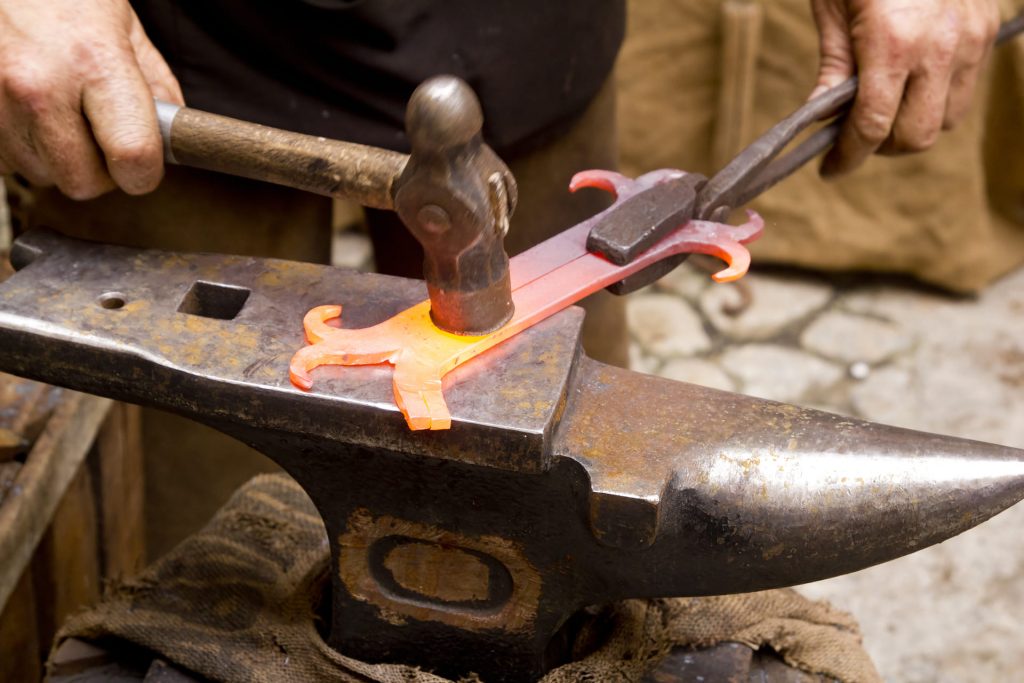
It wouldn’t be an exaggeration to say that the foundations of our modern world are laid by ironmasters. Learning how to forge and produce the most durable and refined iron helped us ignite the Industrial revolution and move forward in creating a modern and connected society.
There’s almost no industry today that doesn’t take advantage of the invention of these influential ironmasters
The ornamental ironworks craft has been able to achieve the sophistication of its awe-inspiring creations, thanks to the iron forging processes developed by blacksmiths and iron forging inventors like Darby, Cort, and Neilson.
It’s worth celebrating how far we’ve come and the people on whose shoulders we stand today.
